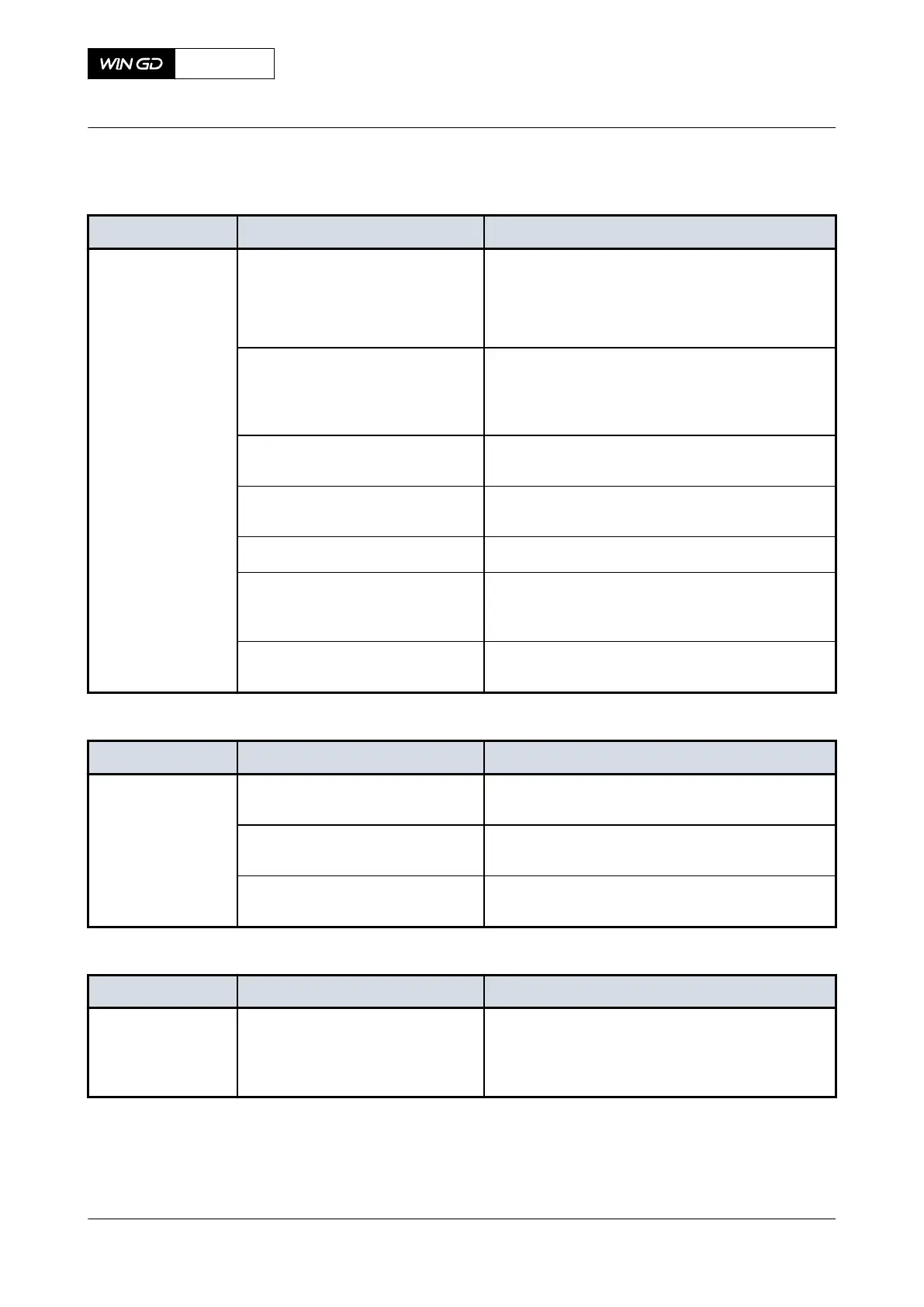10.2.6 Malfunctions of the exhaust gas system (XX37NN)
Tab 10-37 Exhaust gas temperature downstream of a cylinder is too high
Indication Possible cause Procedure
TE3701-nnA The scavenge air flow is too low
•
Clean the turbocharger.
•
Clean the air flaps in the scavenge air re-
ceiver.
•
Clean the scavenge ports.
This is a result of the malfunction
in Table 10-3 - Cylinder cooling
water temperature downstream of
a cylinder is too high
•
Do the repair shown there.
There is air in the cooling water
system
•
Open the vent valves of the cooling water
system.
An injection nozzle is defective
•
Repair or replace the defective injection
nozzle.
The injection time is too long
•
Find the cause and repair the fault.
There are leaks in the cooling wa-
ter system (for example cracks in
a cylinder liner)
•
Find the cause and repair the fault.
There is a fire in the piston under-
side
•
Do the procedure in section 2.4 Fire-fight-
ing in the scavenge air space.
Tab 10-38 Exhaust gas temperature difference downstream of all cylinders is too high
Indication Possible cause Procedure
TE3701-nnA An injection nozzle is defective
•
Repair or replace the defective injection
nozzle.
The fuel supply system is defec-
tive
•
Find the cause and repair the fault.
An exhaust valve is defective
•
Repair or replace the defective exhaust
valve.
Tab 10-39 Exhaust gas temperature upstream of a turbocharger is too high
Indication Possible cause Procedure
TE3721-nnA This is a result of the malfunction
in Table 10-37 - Exhaust gas tem-
perature downstream of a cylinder
is too high
•
Do the repair shown there.
X92DF
AA00-0000-00AAA-410C-A
Operation Manual Malfunctions of systems and components
Winterthur Gas & Diesel Ltd.
- 524 - Issue 002 2020-08
